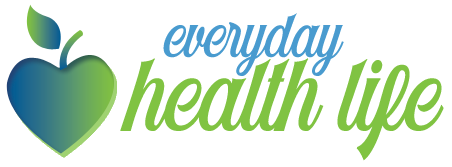Beekeeping, also called apiculture, depends greatly on the availability and quality of pasturage. If bees do not get good flowers to collect nectar and pollen from, they cannot make honey in large amounts. So, pasturage becomes the main source of food for bees and the foundation for honey production.
This article explains:
- What pasturage means
- Types of pasturage
- Plants that provide nectar and pollen
- Why pasturage matters to bees
- How it affects honey quality and quantity
Table of Contents
What is Pasturage?
Pasturage (also called bee forage or bee pasture) refers to plants and flowers from which bees collect:
- Nectar (used to make honey)
- Pollen (used as protein food for young bees)
It includes:
- Flowering crops
- Trees
- Shrubs
- Herbs
-
Wild plants and weeds
Good pasturage ensures bees stay healthy, active, and productive. Without it, honey production becomes low, and bee colonies become weak.
Types of Pasturage
Pasturage can be grouped into three main types based on what the plant provides.
1. Nectar Pasturage
Plants that produce plenty of nectar help bees make more honey.
Examples:
- Mustard
- Sunflower
- Neem
- Eucalyptus
- Clover
- Acacia
- Litchi
- Apple blossoms
These plants are especially valued in commercial beekeeping because they increase honey yield.
2. Pollen Pasturage
These plants mainly provide pollen, which is important for:
- Feeding bee larvae
- Strengthening colony health
- Queen development
Examples:
- Corn (Maize)
- Sorghum
- Date palm
- Castor
- Pollen is like the protein food for bees. Without pollen, young bees cannot grow properly.
3. Combined Nectar and Pollen Plants
Some plants give both nectar and pollen, making them very useful for bee colonies.
Examples:
- Mustard
- Sunflower
- Coconut
- Guava
- Citrus trees
These plants help maintain bee colonies throughout the year.
Importance of Pasturage to Honeybees
Pasturage is essential for bees because:
- It provides the main food sources (nectar & pollen).
- It supports brood development (growth of young bees).
- It strengthens the immune system of bees.
- Healthy and rich pasturage helps bees remain active and natural in their foraging habits.
- It promotes colony strength, which results in higher honey production.
- Diverse pasturage helps maintain ecological balance by supporting other pollinators too.
How Pasturage Affects Honey Production
1. Amount of Honey Produced
If there are many nectar-rich flowers near the beehive, bees do not need to travel far.
This saves their energy and allows them to collect more nectar quickly, resulting in higher honey yield.
2. Taste, Color, and Quality of Honey
Pasturage does not only affect quantity—
it also affects how honey tastes, looks, and smells.
| Pasturage Source | Honey Characteristics |
|---|---|
| Litchi | Light color, sweet fragrance |
| Eucalyptus | Strong aroma, medicinal taste |
| Mustard | Yellowish honey, distinct flavor |
So, the type of flowers bees visit decides:
- Honey color
- Honey flavor
- Honey aroma
- Nutritional value
This is why single-flower honey (e.g., litchi honey) can be more expensive.
3. Seasonal Availability of Flowers
Different plants bloom in different seasons.
Beekeepers need to know blooming patterns to manage their hives.
This helps in:
- Migratory beekeeping (moving hives to nectar-rich areas)
- Timing honey harvesting
- Keeping colonies strong throughout the year
4. Pasturage Mapping and Planning
Professional beekeepers study:
- Types of plants in the area
- Flowering seasons
- Climate conditions
- Density of nectar/pollen sources
Examples of seasonal pasturage:
- Mustard fields → Winter
- Eucalyptus trees → Spring
- Clover → Temperate climates
Good planning ensures continuous honey flow.
Ways to Improve Pasturage
To support honey production, farmers and beekeepers can:
Plant bee-friendly crops and flowering trees
Avoid pesticides during flowering seasons
Allow wildflowers to grow on unused land
Rotate crops to ensure year-round bloom
Maintain gardens and orchards with rich floral diversity
These steps increase both bee population and honey yield.
Conclusion
Pasturage is the heart of successful beekeeping.
It provides bees with the nectar and pollen they need to live, grow, and make honey.
The richness and variety of pasturage directly determine:
- How much honey is produced
- How good the honey tastes
- How strong the bee colonies become
By protecting natural vegetation, planting bee-friendly plants, and practicing safe farming methods, both beekeepers and farmers can benefit.
Healthy flowers support healthy bees, and healthy bees produce high-quality honey.

